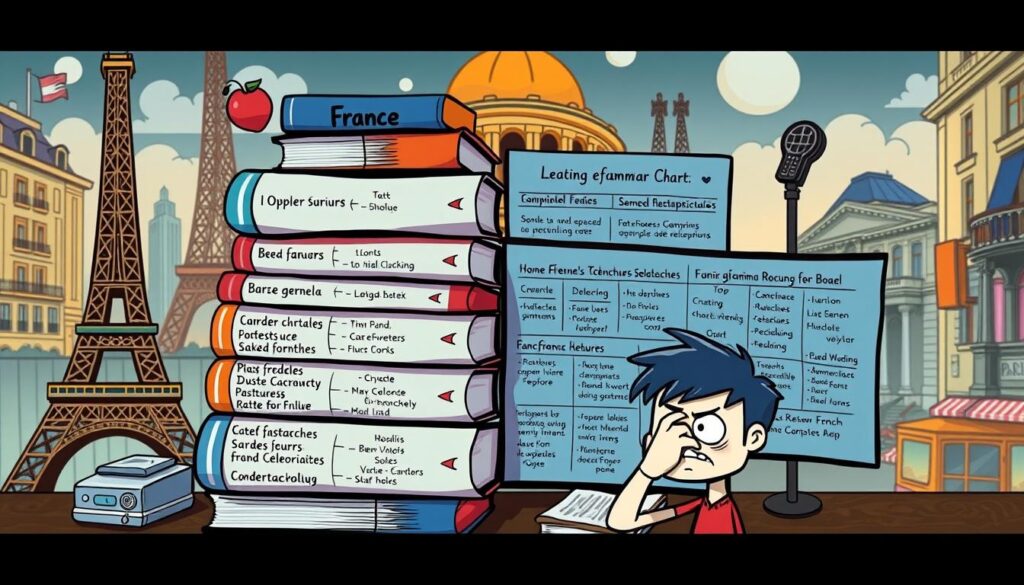On the path of personal growth and innovative learning, reality shifting emerges as a fascinating idea. It steps beyond the usual, offering a peek at what our minds can achieve. A hot topic is whether you can learn a language while shifting realities.
Reality shifting is backed by Jennifer McVey, a Spiritual Director. With 22 years in manifestation and spiritual coaching, she’s a pioneer. Her work includes books and over 600 audio sessions that explore mental transformation.
People wanting to learn new languages are trying methods like Raven, Julia, Pillow, and Blanket. These techniques are praised by seasoned shifters for helping beginners dive into new realities to learn languages faster.
But there’s more. For the imaginative ones, techniques like Alice in Wonderland, Mirror, Hug, and Piano go deeper. And for starters, the lucid dream method is a solid option.
The growing number of stories supports this blend of digital and real experiences. It suggests we might unlock our hidden language skills by adopting another reality. The challenge is figuring out how to navigate these mental worlds to gain new language skills.
Understanding Reality Shifting and Its Popularity
The concept of reality shifting has become very popular. It combines ideas from lucid dreaming, meditation, and ancient Shamanic journeys. People shift their consciousness to visit alternate realities, often inspired by fictional worlds or special places to them.
The idea is old, like the Vedic philosophy called Indra’s Net. It shows the world as fluid and connected. Reality shifting is explained by Thomas Campbell as safe and dream-like. It lets people explore different existences without harm.
After 2018, reality shifting got really popular thanks to YouTube and Reddit. People share stories of living years in other realities. They adopt new identities and face unusual scenarios. This connects deeply with the idea of learning languages in multiple universes.
Shifting realities language study is seen as safe and real. Experiences feel as vivid as day-to-day life. It opens a unique way for learning, as seen here.
Reality shifting isn’t about escaping reality. It’s about understanding our consciousness and reality’s flexibility. Whether it’s for growth, fun, or multiverse language learning, it opens endless possibilities.
This exploration revives ancient knowledge on consciousness across cultures. The interest in shifting realities language study gives a new view on learning and self-improvement.
Can You Learn a Language While Shifting Realities
The idea of learning a new language through reality shifting is getting a lot of attention. It combines the thrill of alternate realities with practical language learning. But, is it really possible to learn a language this way? We’re going to look closer at how shifting realities might help in learning languages. We’ll also see what people say about their own experiences in this unique learning field.
Defining Reality Shifting in Multiverse Language Learning
Reality shifting means moving your mind to a different reality to learn languages faster. It uses the idea of language immersion. Normally, to learn a new language, you’d be around people who speak it all the time. But with reality shifting, this happens in your mind’s imaginative world.
Testimonials and Personal Experiences
People who try learning languages by shifting realities share exciting stories. They talk about making up detailed stories. In these stories, they are speaking and interacting in the language they want to learn. These stories about living in made-up worlds show it could be a fun way to practice a new language. But, these stories are still just personal experiences.
| Experience Type | Description | Potential Influence on Language Learning |
|---|---|---|
| Direct Interaction in DR | Regular conversation with invented characters in the target language. | Highly immersive, potential rapid acquisition and usage of vocabulary. |
| Scripted Scenarios | Pre-written scripts imagining complex language use scenarios in DR. | Structured learning, contextual language understanding. |
| Passive Observations | Visualizing native speakers in typical interactions within the DR. | Understanding of pragmatic aspects of language, such as tone and mannerisms. |
While it’s a great idea to think you can learn a language by shifting realities, we still need more proof. Right now, we only have stories from individuals. There’s no scientific study backing this up yet. As we learn more about how our brains work with languages, will shifting realities really help us learn better? Or is it just an interesting thought?
Psychological Traits That May Enhance Language Learning through Shifting
The technique of reality shifting is catching a lot of attention, especially online. Here, discussions on this fascinating topic have gotten over 1.8 billion views. It’s crucial to explore psychological traits shared by reality shifters to understand better how this can aid in language acquisition. These characteristics not only reveal what individual experiences could be like. They also show us what immersive learning might look like down the line.
In 2021, a study looked into the psychological features reality shifters often have. They discovered three main traits: absorption, dissociation, and fantasy-proneness. These traits enable one to become fully involved in or detach from their current reality. This makes it easier to dive into new worlds. Such states could be excellent for picking up a new language in simulated settings where the desired language is spoken.
| Trait | Description | Potential Impact on Language Learning |
|---|---|---|
| Absorption | The ability to become deeply engaged in one’s own mental imagery or activities. | Facilitates immersive language learning experiences similar to physical immersion in a native-speaking environment. |
| Dissociation | The compartmentalization of certain areas of conscious awareness, allowing a person to ‘detach’ from the current reality. | Enables learners to experience language use as natural and fluid by temporarily suspending disbelief and environmental constraints. |
| Fantasy-Proneness | The predisposition to vividly imagine and engage with fantastical scenarios. | Supports the creation of vivid, linguistically rich alternate realities conducive to practicing and acquiring language skills. |
This information makes us think about how we can nurture these psychological traits to boost language learning. Importantly, striking a balance in teaching methods, like what’s happening in China, highlights combining new ideas with traditional ways. Using methods like Communicative Language Teaching (CLT) and Task-Based Language Teaching (TBLT) can be adapted to fit these immersive, mind-aware educational approaches.
Exploring these connections shows us how the psychological traits of learners and teaching methods can greatly affect learning a new language.
Modalities and Techniques Utilized in Shifting Realities for Language Study
Reality shifting for language study brings new ways to learn. It mixes advanced visualization and affirmations. This makes learning deep and engaging. By mastering these methods, you can improve language skills in your alternate realities.
Visualization is key in shifting realities language study. It’s more than just imagining—it’s feeling and hearing your alternate reality. This helps in learning languages through conversations and cultural sounds.
The Role of Visualization and Affirmations in Language Immersion
Using affirmations boosts language immersion. They make you believe you’re gaining language skills in your alternate reality. Say something like, “I am speaking [target language] fluently in my alternate reality.” This helps your mind learn better.
Types of Reality Shifting Methods: From Alice in Wonderland to Elevator Technique
The Alice in Wonderland method makes you feel like you’re diving into another reality. It’s exciting and helps you feel you’re truly stepping into a new world.
The Elevator technique, on the other hand, is more gradual. You visualize yourself traveling to your desired reality level by level. This brings you closer to speaking a new language fluently with each step.
Using these methods makes learning languages fun and fast. It’s like real immersion. For starters, visit how to learn the French alphabet for basic skills.
These immersive methods match modern teaching ideas. Virtual reality (VR) now brings real-life language use into classrooms. It offers a new, effective way to master languages.
The Role of Neuroscience in Language Acquisition and Reality Shifting
Recent advances in neuroscience have illuminated how we learn languages and shift realities. Researchers use EEG and fMRI to see how the brain adapts. They look at learning in both real and created worlds.
Neuroscience plays a key role in language learning. It shapes how we learn new languages. Being bilingual can improve how we solve problems and think creatively. But, it can also make finding words and speaking harder.
Alternate realities and technologies like virtual reality (VR) add new layers to language learning. These tools make learning more interactive and imaginative.
To show how VR affects learning languages, let’s look at some data:
| Technology | Impact on Language Acquisition |
|---|---|
| Virtual Reality (VR) | Boosts thinking flexibility; creates immersive learning spaces. |
| Augmented Reality (AR) | Mixes real life with extra senses to help learn languages in context. |
Combining neuroscience with virtual worlds could improve how we learn languages. It lets scientists design experiences that help learning and reduce stress.
At its core, the mix of neuroscience, technology, and language learning is creating new learning methods. Neuroscience’s role in learning languages in real and changed realities is exciting to explore.
The Prospects and Challenges of Alternate Realities Language Learning
The new approach to learning languages, like reality shifting, could change how we learn languages. It lets people dive into learning by feeling it, making it more fun and effective. When COVID-19 hit, more people started learning languages online, changing how we teach languages. Some students liked learning away from the classroom, but others felt bored or unhappy. Those good at learning on their own and understanding their feelings did better with this change. Now, using virtual reality and AI in learning doesn’t seem so strange to students and teachers.
But, there are hurdles, like not having enough proof that this method really works. When online language classes got popular during the pandemic, problems like not everyone having access to technology came up. How good these classes are can depend a lot on how they’re set up and what resources students can use. You can find good resources here: how to learn French effectively. While using new ways like reality shifting can help with stress, relying on them too much might stop students from developing important skills for speaking languages in real life. Recent studies in psychology show we need to remember that learners are complex people. Mixing old and new ways of learning languages might work best.
Looking ahead, it’s key to find the right mix of new opportunities and challenges. Students are ready for online learning, but their happiness with it matters a lot. Teachers should come up with new ways to teach languages online that feel real, making students more confident and happy. As researchers keep looking into how we learn languages, it’s important to use many different teaching methods. We should think about how these new methods affect students’ self-image and their use of the language in the real world. This is important for growing in the field of language acquisition challenges.


